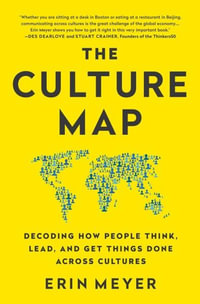This comprehensive yet accessible textbook provides readers with an advanced and applied approach to traditional international business that integrates key cross-cultural management topics. Its ten chapters give profound insights into analysing, selecting and entering international markets, strategic partnerships, strategic positioning, global value chains, organizational designs, intercultural interaction, leadership and motivation and international human resources management. For each of these topics, advanced and contemporary theoretical and analytical frameworks are discussed and translated into toolsets that will assist readers in solving practical challenges.
Key Features:
- A strong connection of theoretical foundations with illustrative case studies
- Integration of current trends and challenges, such as intercultural competence, migration and digitalization, offshoring and global value chains
- Comprehensive practical examples from multinational firms that demonstrate the value of the frameworks and toolsets included in each chapter
- An integrative case study that picks up key practical challenges in each chapter and invites the reader to apply theories, frameworks and toolsets
- A supplementary website that provides multiple materials for furthering readers' knowledge, including toolsets, further cases and exercises, accompanying videos, quizzes, and presentation slides
International Business Strategy and Cross-Cultural Management is a key resource for postgraduate courses on international business management, globalisation and entrepreneurship, international human resource management and global marketing. It will also serve as a complementary text for lecturers and students involved in the X-Culture project.
Industry Reviews
'International Business Strategy and Cross-cultural Management: An Applied Approach is not just another standard IB textbook. The book excels in several ways. First, it fulfils the title's promise of an applied approach by translating IB and cultural theory into many exciting real life company cases and a constructed but realistic case, "Magic Juice", which reappears in each chapter covering its key topics. The successful application of theory makes the book appealing to students as well as managers facing the challenges of international business, not least the question of how to navigate intercultural interactions. Here, the authors bring two interesting concepts to the table: "the culture map" and "cultural intelligence". Often, textbooks focus on either IB strategy or cross-cultural management. However, the two topics are closely related and this book offers a happy marriage of the two. I give the book my warmest recommendations.' -- Bent Petersen, Copenhagen Business School, Denmark
























